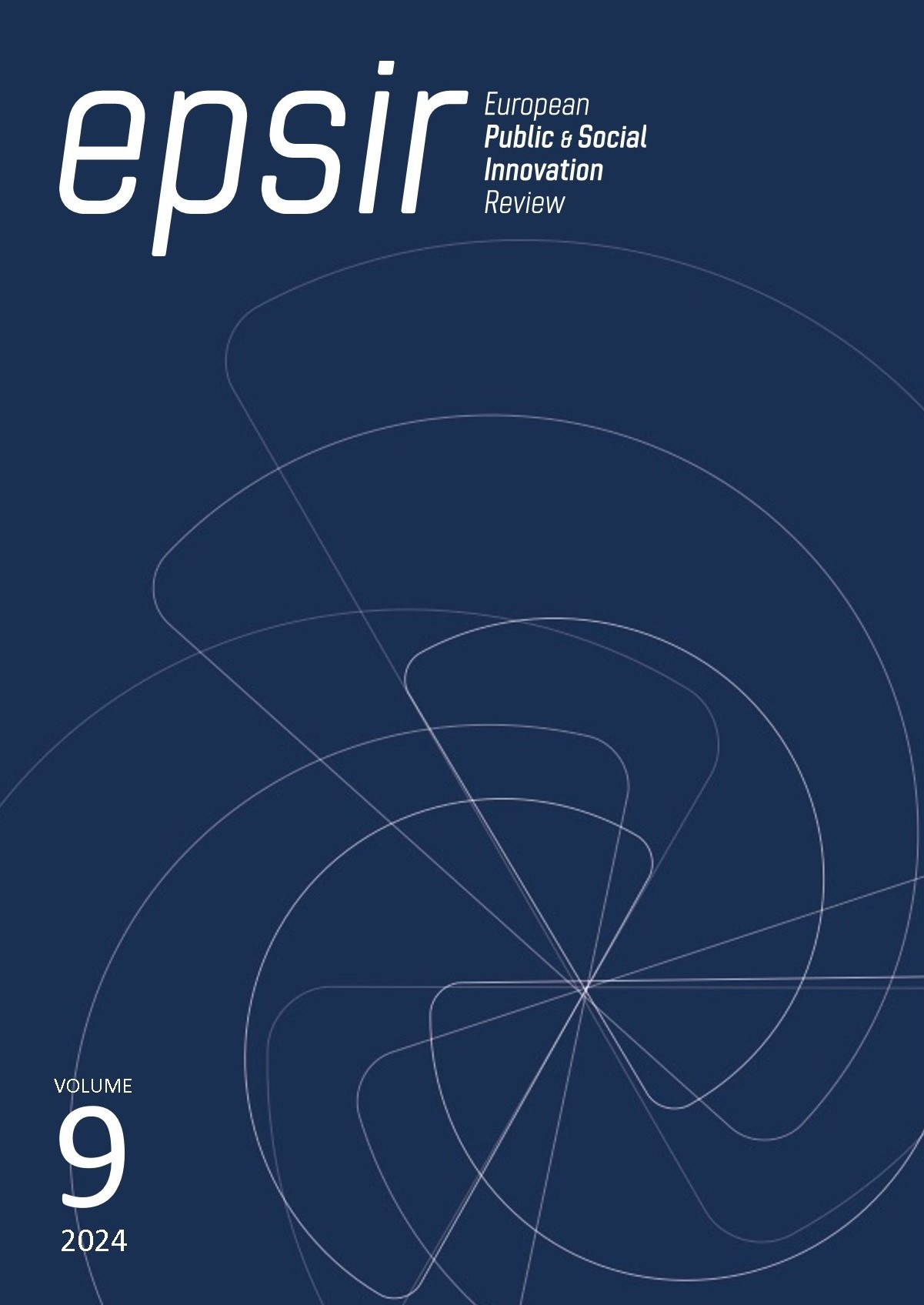Figuras de la producción subsidiaria en el arte contemporáneo español: su relación con el artista y su obra
DOI:
https://doi.org/10.31637/epsir-2024-1717Palabras clave:
arte, producción, tecnología, fabricators, artista, colaboración, trabajo, visibilidadResumen
Introducción: El objetivo de este trabajo es evaluar el desarrollo de la producción subsidiaria en el arte plástico en España. Una actividad escasamente estudiada y reconocida. Metodología: El estudio sigue los criterios de la investigación cualitativa a través de unas entrevistas en profundidad y semiestructuradas. La consulta a cuatro productores de arte abarca cinco items que se agrupan en dos bloques temáticos; la relación con el artista, la relación con la obra. Resultados: Evidencian las estrechas relaciones entre artista y fabricators, consolidadas en el tiempo y fundamentadas comercialmente, que aparecen como indispensables para abordar una produccion de calidad artítisca y complejidad tecnológica. Discusión: Se enmarca en el contexto de las consecuencias de tecnologización del arte y las interdependencias entre ideacion y materialización. Además del protagonismo de las mediaciones técnicas en la construccion de la reputación artística. Conclusiones: La importancia y relevancia de estas figuras se manifiesta en cómo la actividad de estos técnicos incide sustancialmente en la obra de artistas fundamentales de nuestro panorama artístico como son, por ejemplo, Juan Muñoz, Miquel Barceló, Cristina Iglesias, o artistas de generaciones más jóvenes, como por ejemplo Dionisio Gonzalez, Jacobo Castellanos y Carlos Irijalba, entre otros.
Descargas
Citas
Alpha-Arte (s.f.). Inicio. https://alfaarte.com/
Becker, H. (2008). Los mundos del arte: sociología del trabajo artístico. Prometeo.
Benveniste, D. (s.f.). https://www.benveniste.com/
Bourdieu, P. (1995). Las reglas del arte. Anagrama.
Factum – Arte (s.f.). Inicio. https://www.factum-arte.com/es/inicio
Galván Lamet, P. (2012). La figura del fabricator en los procesos técnicos de arte contemporáneo. (Tesis doctoral). Universidad Complutense Madrid, Repositorio institucional U.C.M. https://produccioncientifica.ucm.es/documentos/5d1df62329995204f7662671
Graw, I. (2015). ¿Cuánto vale el arte? Mardulce.
Labaco, R. (2013). Out of Hand: Materializing in the Postdigital. Black Dog Publisihing.
Lipovetsky, G. y Serroy, J. (2015). La estetización del mundo. Anagrama.
Neira, C. (2013). La estampación es un ejercicio para un artista, como un escáner cerebral. Diario Nueva España. bit.ly/3S4LcB3
Petry, M. (2011). The Art of not Making: The New Artist/Artisan Relationship. Thames and Hudson.
Polanco, R. (2009). Rubén Polanco [video]. Youtube. bit.ly/3WhfPWj
Mc Andrew, C. (2023). The art market 2023. Art Basel and UBS. file:///http /art-market-report-twenty-three.pdf
Descargas
Publicado
Cómo citar
Número
Sección
Licencia
Derechos de autor 2024 Pedro Galván Lamet

Esta obra está bajo una licencia internacional Creative Commons Atribución-NoComercial-SinDerivadas 4.0.
Authors who publish with this journal agree to the following terms:- Authors retain copyright and grant the journal right of first publication with the work simultaneously licensed under Creative Commons Non Commercial, No Derivatives Attribution 4.0. International (CC BY-NC-ND 4.0.), that allows others to share the work with an acknowledgement of the work's authorship and initial publication in this journal.
- Authors are able to enter into separate, additional contractual arrangements for the non-exclusive distribution of the journal's published version of the work (e.g., post it to an institutional repository or publish it in a book), with an acknowledgement of its initial publication in this journal.
- Authors are permitted and encouraged to post their work online (e.g., in institutional repositories or on their website) prior to and during the submission process, as it can lead to productive exchanges, as well as earlier and greater citation of published work (See The Effect of Open Access).




